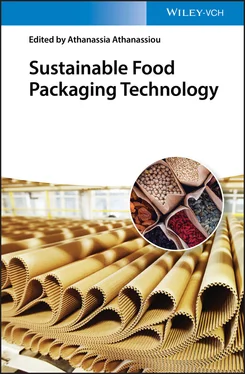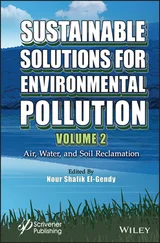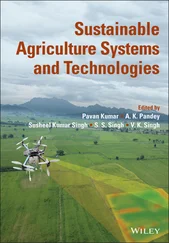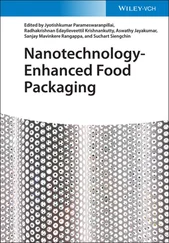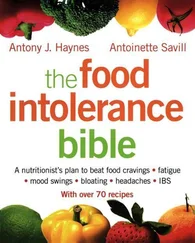38 38 Liu, D., Wei, G., Li, T. et al. (2015). Effects of alkaline pretreatments and acid extraction conditions on the acid‐soluble collagen from grass carp (Ctenopharyngodon idella) skin. Food Chemistry 172: 836–843.
39 39 Liang, Q., Wang, L., Sun, W. et al. (2014a). Isolation and characterization of collagen from the cartilage of Amur sturgeon (Acipenser schrenckii). Process Biochemistry 49 (2): 318–323.
40 40 Chuaychan, S., Benjakul, S., and Kishimura, H. (2015). Characteristics of acid‐ and pepsin‐soluble collagens from scale of seabass (Lates calcarifer). LWT Food Science and Technology 63 (1): 71–76.
41 41 Tan, Y. and Chang, S.K.C. (2018). Isolation and characterization of collagen extracted from cannel catfish (Ictalurus punctatus) skin. Food Chemistry 242: 147–155.
42 42 Hanjabam, M.D., Kannaiyan, S.K., Kamei, G. et al. (2015). Optimisation of gelatin extraction from unicorn leatherjacket (Aluterus Monoceros) skin waste: response surface approach. Journal of Food Science and Technology 52 (2): 976–983.
43 43 Pal, G.K., Nidheesh, T., and Suresh, P.V. (2015). Comparative study on characteristics and in vitro fibril formation ability of acid and pepsin soluble collagen from the skin of catla (Catla catla) and rohu (Labeo rohita). Food Research International 76: 804–812.
44 44 Thuy, L.T.M., Okazaki, E., and Osako, K. (2014). Isolation and characterization of acid‐soluble collagen from the scales of marine fishes from Japan and Vietnam. Food Chemistry 149: 264–270.
45 45 Pal, G.K. and Suresh, P.V. (2016). Sustainable valorisation of seafood by‐products: recovery of collagen and development of collagen‐based novel functional food ingredients. Innovative Food Science & Emerging Technologies 37: 201–215.
46 46 Ahmad, T., Ismail, A., Ahmad, S.A. et al. (2017). Recent advances on the role of process variables affecting gelatin yield and characteristics with special reference to enzymatic extraction: a review. Food Hydrocolloids 63: 85–96.
47 47 Jridi, M., Nasri, R., Salem, R.B.S.B. et al. (2015). Chemical and biophysical properties of gelatins extracted from the skin of octopus (Octopus vulgaris). LWT Food Science and Technology 60 (2): 881–889.
48 48 Sila, A., Martinez‐Alvarez, O., Haddar, A. et al. (2015). Recovery, viscoelastic and functional properties of Barbel skin gelatine: investigation of anti‐DPP‐IV and anti‐prolyl endopeptidase activities of generated gelatine polypeptides. Food Chemistry 168: 478–486.
49 49 Abdollahi, M., Rezaei, M., Jafarpour, A., and Undeland, I. (2018). Sequential extraction of gel‐forming proteins, collagen and collagen hydrolysate from gutted silver carp (Hypophthalmichthys molitrix), a biorefinery approach. Food Chemistry 242: 568–578.
50 50 Jeevithan, E., Wu, W., Nanping, W. et al. (2014). Isolation, purification and characterization of pepsin soluble collagen isolated from silvertip shark (Carcharhinus albimarginatus) skeletal and head bone. Process Biochemistry 49 (10): 1767–1777.
51 51 Chen, S., Chen, H., Xie, Q. et al. (2016b). Rapid isolation of high purity pepsin‐soluble type I collagen from scales of red drum fish (Scianops ocellatus). Food Hydrocolloids 52: 468–477.
52 52 Liang, Q., Wang, L., He, Y. et al. (2014b). Hydrolysis kinetics and antioxidant activity of collagen under simulated gastrointestinal digestion. Journal of Functional Foods 11: 493–499.
53 53 Zou, Y., Wang, L., Cai, P. et al. (2017). Effect of ultrasound assisted extraction on the physicochemical and functional properties of collagen from soft‐shelled turtle calipash. International Journal of Biological Macromolecules 105: 1602–1610.
54 54 Huang, C.Y., Kuo, J.M., Wu, S.J., and Tsai, H.T. (2016). Isolation and characterization of fish scale collagen from tilapia (Oreochromis sp.) by a novel extrusion‐hydroextraction process. Food Chemistry 190: 997–1006.
55 55 Hattrem, M.N., Molnes, S., Haug, I.J., and Draget, K.I. (2015). Interfacial and rheological properties of gelatin based solid emulsions prepared with acid or alkali pretreated gelatins. Food Hydrocolloids 43: 700–707.
56 56 Liu, Y., Xia, L., Jia, H. et al. (2017). Physiochemical and functional properties of chum salmon (Oncorhynchus keta) skin gelatin extracted at different temperatures. Journal of the Science of Food and Agriculture 97 (15): 5406–5413.
57 57 Garrido, T., Uranga, J., Guerrero, P., and de la Caba, K. (2018). The potential of vegetal and animal proteins to develop more sustainable food packaging. In: Polymers for Food Applications (ed. T. Gutiérrez), 25–59. Singapore: Springer.
58 58 Abdelhedi, O., Jridi, M., Nasri, R. et al. (2019). Rheological and structural properties of Hemiramphus far skin gelatin: potential use as an active fish coating agent. Food Hydrocolloids 87: 331–341.
59 59 Abdelmalek, B.E., Gómez‐Estaca, J., Sila, A. et al. (2016). Characteristics and functional properties of gelatin extracted from squid (Loligo vulgaris) skin. LWT Food Science and Technology 65: 924–931.
60 60 Etxabide, A., Garrido, T., Uranga, J. et al. (2018). Extraction and incorporation of bioactives into protein formulations for food and biomedical applications. International Journal of Biological Macromolecules 120: 2094–2105.
61 61 Ananey‐Obiri, D., Matthews, L., Azahrani, M.H. et al. (2018). Application of protein‐based edible coatings for fat uptake reduction in deep‐fat fried foods with an emphasis on muscle food proteins. Trends in Food Science & Technology 80: 167–174.
62 62 Khalil, H.P.S.A., Banerjee, A., Saurabh, C.K. et al. (2018). Biodegradable films for fruits and vegetables packaging application: preparation and properties. Food Engineering Reviews 10 (3): 139–153.
63 63 Uranga, J., Etxabide, A., Guerrero, P., and de la Caba, K. (2018). Development of active fish gelatin films with anthocyanins by compression molding. Food Hydrocolloids 84: 313–320.
64 64 Etxabide, A., de la Caba, K., and Guerrero, P. (2016a). A novel approach to manufacture porous biocomposites using extrusion and injection moulding. European Polymer Journal 82: 324–333.
65 65 Hosseini, S.F. and Gómez‐Guillén, M.C. (2018). A state‐of‐the‐art review on the elaboration of fish gelatin as bioactive packaging: special emphasis on nanotechnology‐based approaches. Trends in Food Science & Technology 79: 125–135.
66 66 Armentano, I., Fortunati, E., Burgos, N. et al. (2015). Bio‐based PLA_PHB plasticized blend films: processing and structural characterization. LWT Food Science and Technology 64 (2): 980–988.
67 67 Mkandawire, M. and Aryee, A.N.A. (2018). Resurfacing and modernization of edible packaging material technology. Current Opinion in Food Science 19: 104–112.
68 68 Bermúdez‐Oria, A., Rodríguez‐Gutiérrez, G., Vioque, B. et al. (2017). Physical and functional properties of pectin‐fish gelatin films containing the olive phenols hydroxytyrosol and 3,4‐dihydroxyphenylglycol. Carbohydrate Polymers 178: 368–377.
69 69 Drakos, A., Pelava, E., and Evageliou, V. (2018). Properties of flour films as affected by the flour's source and particle size. Food Research International 107: 551–558.
70 70 Tongnuanchan, P., Benjakul, S., Prodpran, T. et al. (2016). Mechanical, thermal and heat sealing properties of fish skin gelatin film containing palm oil and basil essential oil with different surfactants. Food Hydrocolloids 56: 93–107.
71 71 Amalini, A.N., Norziah, M.H., Khan, I., and Haafiz, M.K.M. (2018). Exploring the properties of modified fish gelatin films incorporated with different fatty acid sucrose esters. Food Packaging and Shelf Life 15: 105–112.
72 72 Kchaou, H., Benbettaïeb, N., Jridi, M. et al. (2018). Enhancement of structural, functional and antioxidant properties of fish gelatin films using Maillard reactions. Food Hydrocolloids 83: 326–339.
Читать дальше
